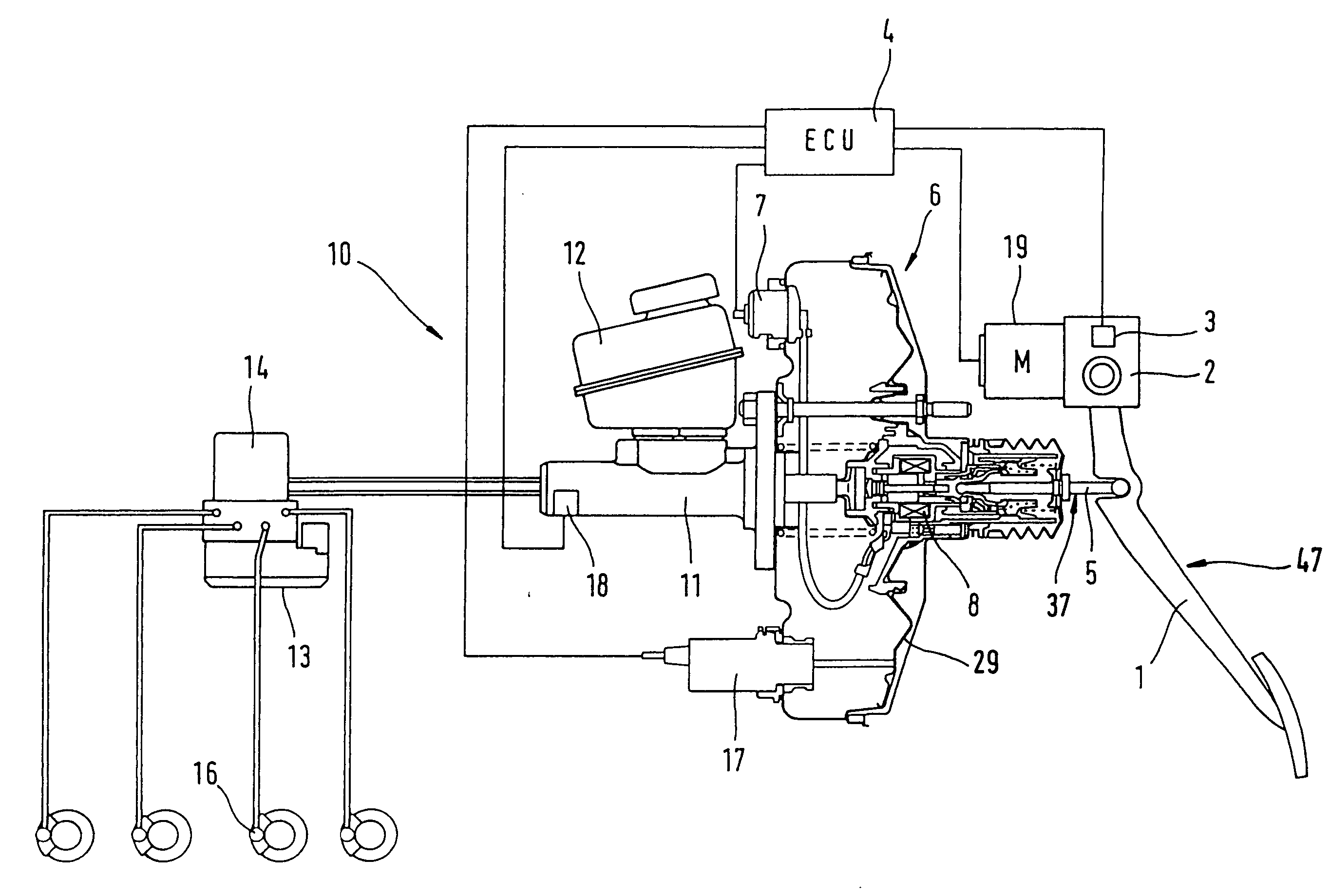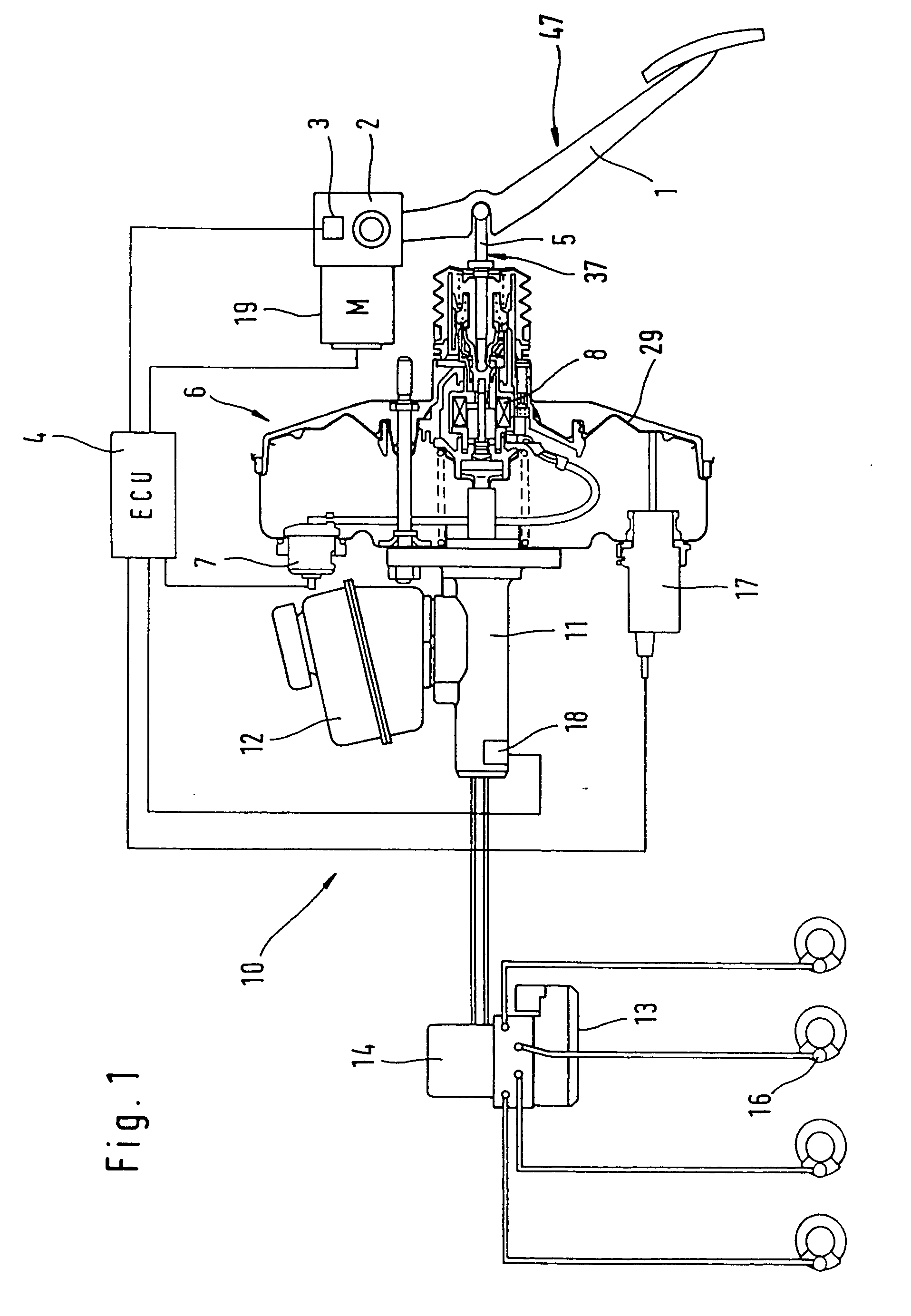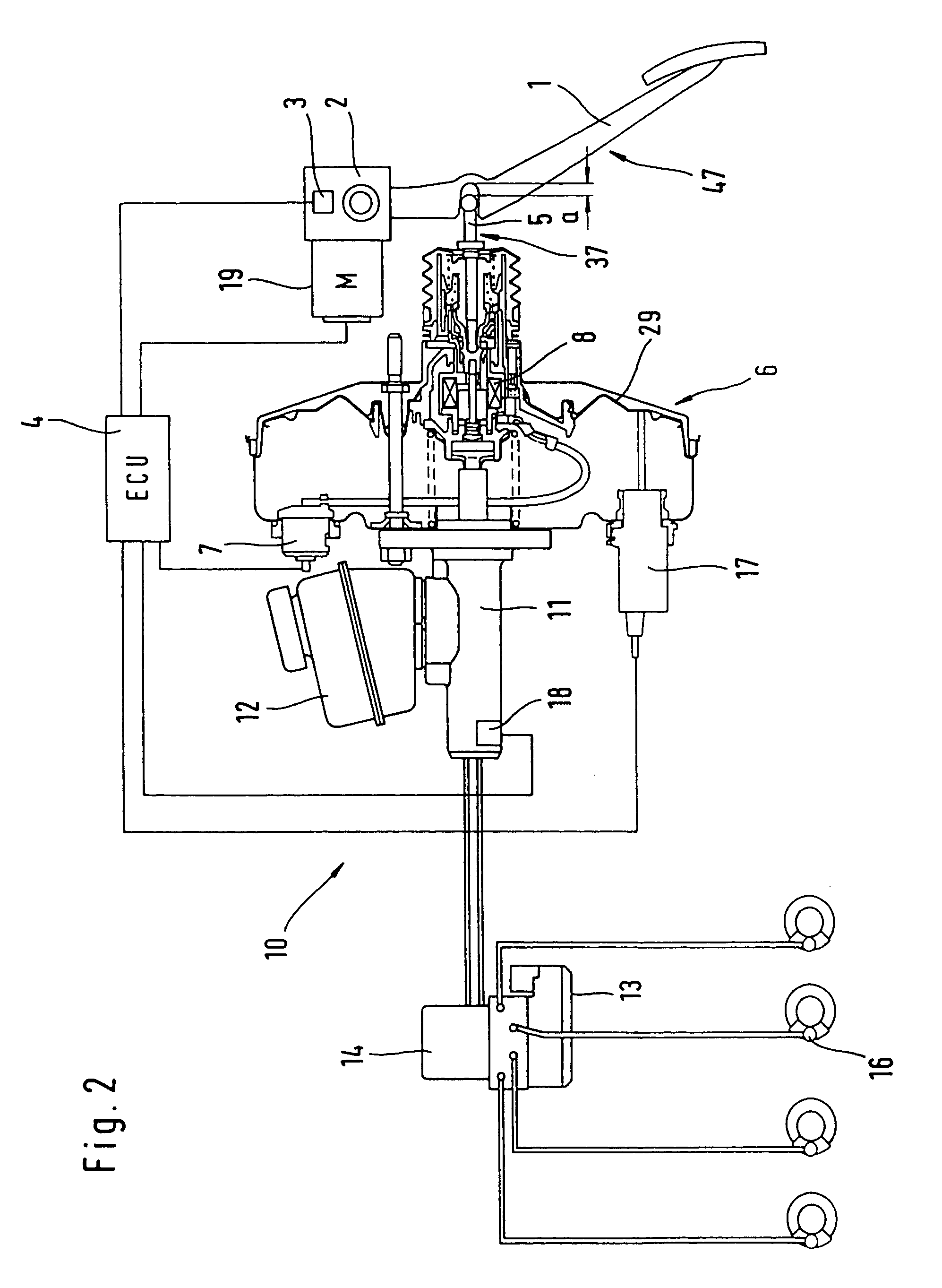Brake by-wire actuator
a technology of actuators and wires, applied in the direction of braking systems, braking components, transportation and packaging, etc., to achieve the effect of low cost, compact arrangement, and low requirement of sensors
- Summary
- Abstract
- Description
- Claims
- Application Information
AI Technical Summary
Benefits of technology
Problems solved by technology
Method used
Image
Examples
Embodiment Construction
[0051] With reference to FIG. 1, a brake actuation device comprises a brake pedal 1 equipped with a simulator 2. Simulator 2 includes at least one, preferably two redundant actuation sensors 3 whose output signals are sent to an electronic control unit 4 (ECU). The brake pedal 1 can be coupled mechanically to the booster 6 by way of an actuation component 5 of a pneumatic booster 6. A connection of this type is usual in the prior art pneumatic boosters 6 because they are actuated mechanically in analog manner by way of the brake pedal 1 and the actuation component 5. In the case of failure of the electronic unit 4, such an actuation is possible also in the brake actuation device of the invention and provides a reliable fallback mode. The booster 6 can be actuated electrically by an output signal of the electronic circuit 4 by way of a connection 7 in addition to the actuation component 5. This is done by means of a magnetic drive 8 which makes catch at the actuation component 5 and ...
PUM
 Login to View More
Login to View More Abstract
Description
Claims
Application Information
 Login to View More
Login to View More - R&D
- Intellectual Property
- Life Sciences
- Materials
- Tech Scout
- Unparalleled Data Quality
- Higher Quality Content
- 60% Fewer Hallucinations
Browse by: Latest US Patents, China's latest patents, Technical Efficacy Thesaurus, Application Domain, Technology Topic, Popular Technical Reports.
© 2025 PatSnap. All rights reserved.Legal|Privacy policy|Modern Slavery Act Transparency Statement|Sitemap|About US| Contact US: help@patsnap.com



